For Sir JJ School of Art, Architecture and Design the ‘De-Novo Deemed University’ tag might be the one last shot they have at reviving its flagging legacy, but the roadblocks are too many
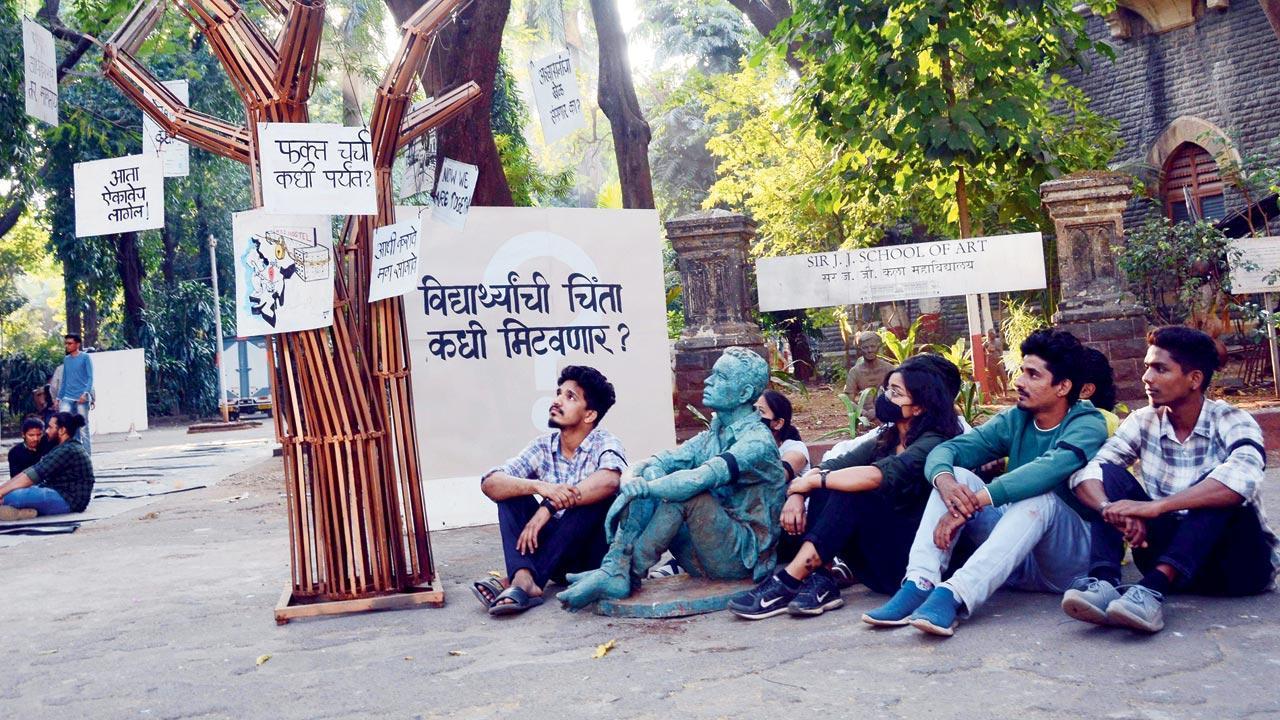
The 400-odd students of Sir JJ School of Art have been silently protesting for the last one week, creating artworks to highlight the apathy towards providing basic infrastructure, filling up vacant teaching posts and making hostel facilities available for outstation students. Pics/Sameer Markande
At the Sir JJ School of Art, students have abandoned their classrooms since the last five days. Spilling over into the empty spaces of the campus under the peak afternoon sun, occupying the garden patches and muddy pathways, they are engaged in the process of creation. On one end, someone is building an installation of a running tap with handwritten protest notes appearing to “gush out”—give us an answer, where are the teachers, we need a roof to live (they appeal in Marathi). Ahead, at the mouth of the entrance, hundreds of students are seated on a mat, making sketches, and doing stencil art. Those standing are adding brush strokes to the canvas placed on their easels—all painting a young woman, who has volunteered to be the subject of their portrait, as she sits languidly on a stool. They work in silence; no blaring speakers to galvanise the large group of students, or music to keep them engaged and entertained.
ADVERTISEMENT
Art is how they express themselves. It’s also their language of protest, Santosh Sanjay Parkar, a student of interior design, and student general secretary, tells us. The students have, for the last few days, been protesting for better infrastructure including loom machines and modern tech, and permanent faculty. “It’s the basic right of every student,” they argue.
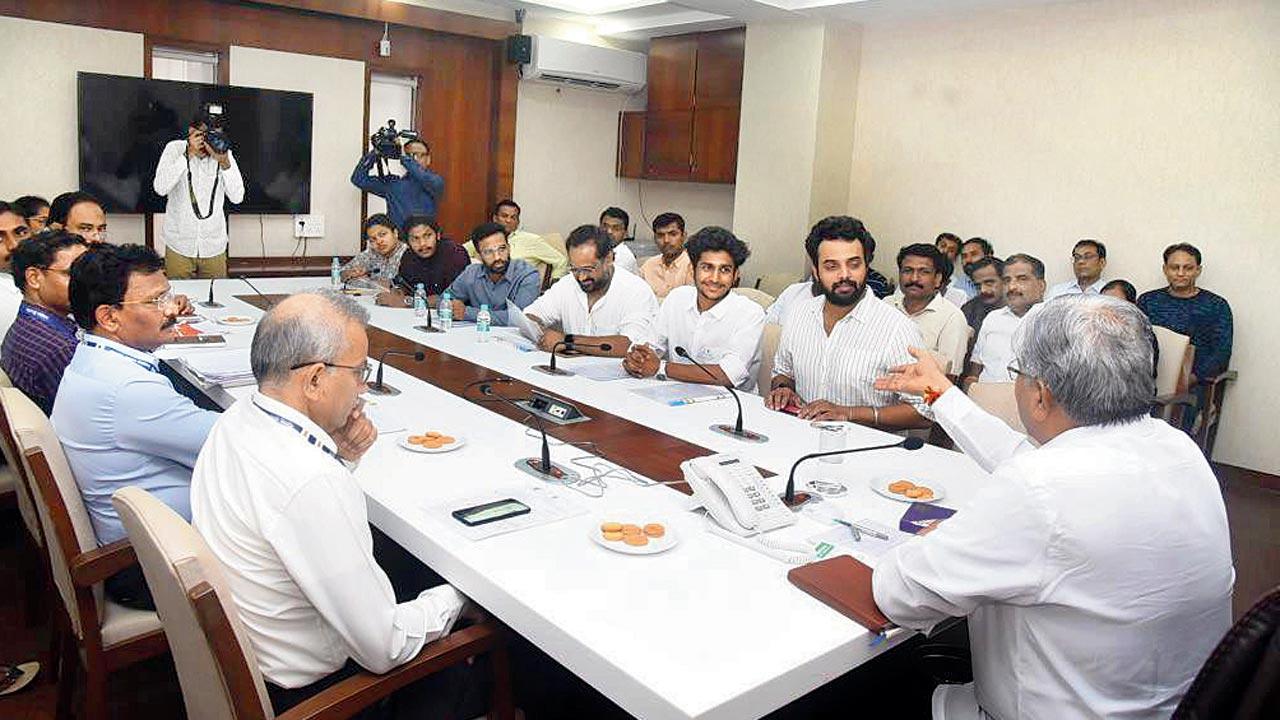 Students of Sir JJ School of Art during a meeting with Chandrakant Patil, Minister of Higher and Technical Education, on Thursday. Pic/Getty Images
Students of Sir JJ School of Art during a meeting with Chandrakant Patil, Minister of Higher and Technical Education, on Thursday. Pic/Getty Images
The school, comprising 400 students, is the fountainhead of art schools in India. And yet, students claim, administrative apathy has led to its slow deterioration. “This is the third protest in 15 years,” says Amol Hirawadekar, an alumnus of JJ, who was part of protests in 2009 and 2014, while he was pursuing his Bachelor’s and Master’s degrees. “Unfortunately, almost all the problems that plagued us then, continue to trouble students today as well.” “Even at the time, we didn’t have permanent teachers, appointed through MPSC [Maharashtra Public Service Commission] exams. These posts are lying vacant for years.” Parkar says students from across Maharashtra are enrolled at this college. “Many of them do not have financial backing, and are reliant on the facilities given by the state government, like the hostels. We used to have a hostel in Kalanagar, Bandra East, but that has been shut for eight years.” Ongoing renovation work has also left many classrooms and toilets out of bounds. Last Tuesday, the students announced that they would withdraw from participating at the Rajya Kala Pradarshan or the state art exhibition, to be held in January 2023, in Pune—the institute is known to bag several awards here.
However, some faculty members and former alumni fear that the protest has shifted everyone’s focus from the ambitious De-Novo Deemed to be University status for Sir JJ School of Art, Architecture and Design, which has been in the works for six years, and has already seen several roadblocks. It could just be the solution to all the problems that the premier art school is snowed under. According to a source, protests at such a crucial juncture where the faculty is a hair’s breadth away from rescuing JJ and reviving its dwindling presence in the world of art, could throw cold water on the efforts. Environment artist Shilpa Joglekar, who graduated from JJ School of Art in 1989, says, “Frankly speaking, I don’t know which straw has broken the camel’s back,” while referring to the students and their decision to protest. “Yes, there are issues with the institute—and some of these existed while I was there too. But if the students were taken into confidence and explained to that ‘we are heading for a very big change,’ which would help them in the near future, then perhaps they would have held on,” she thinks.
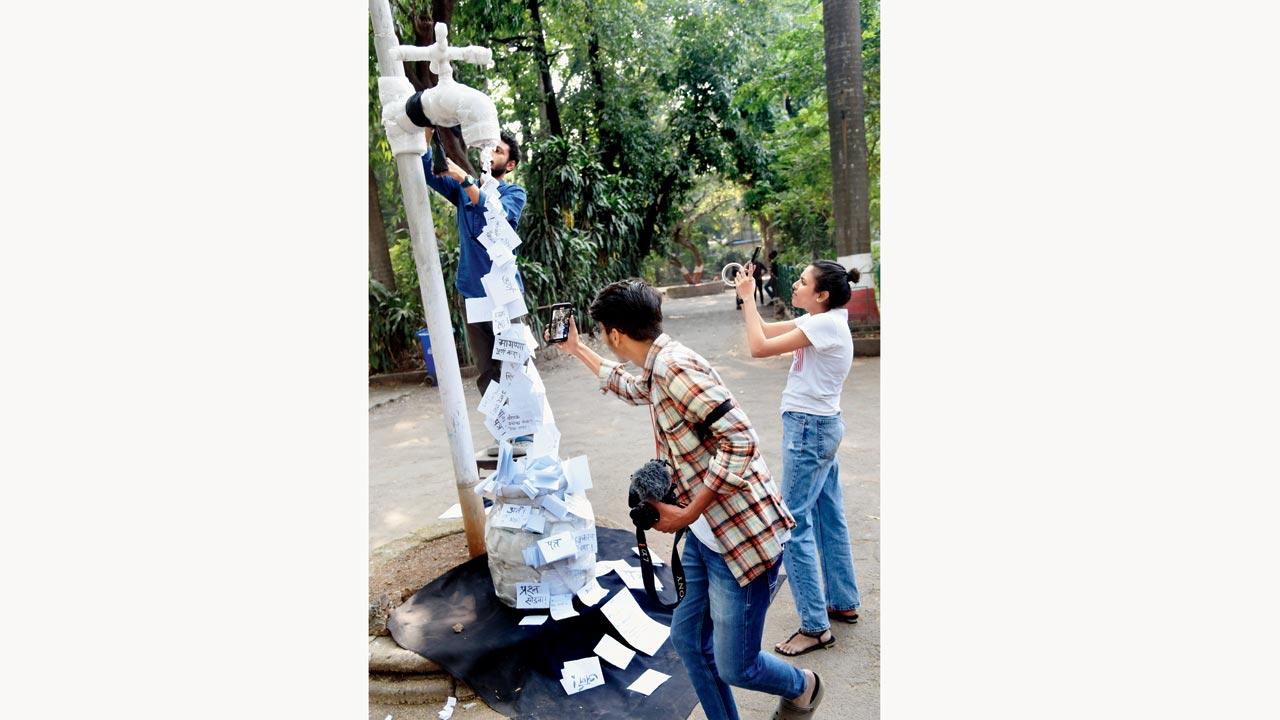 An installation of a running tap with handwritten protest appeals by students appearing to “gush out”, has become the centre of the silent protest
An installation of a running tap with handwritten protest appeals by students appearing to “gush out”, has become the centre of the silent protest
In his just released book, Citizen Gallery: The Gandhys of Chemould and the Birth of Modern Art in Bombay (Speaking Tiger Books), author Jerry Pinto recounts the story of the birth of Sir Jamsetjee Jeejeebhoy School of Art, one of the two most important art institutions of the city, along with The Bombay Art Society.
It began with the Great Exhibition or the Crystal Palace Exhibition of 1851 in Hyde Park, London, which was meant to be a global display of the arts and crafts. “Those Indians who did get to England to see The Great Exhibition of 1851 were impressed by the vastness of the human enterprise and how much the ‘poor, bare, forked animal’ was getting done in various parts of the world. Amongst them was Sir Jamsetjee Jeejeebhoy, a great Bombay merchant and philanthropist,” writes Pinto in the book, “Sir Jamsetjee came back with a dream. He wrote a letter to the Directors of the East India Company in May 1853, offering a donation of a hundred thousand rupees to start an Art Instruction School. For its part, the company had to provide the land and bring masters out from England. This seemed to have found favour with the directors. Such art workers could serve the Company’s larger interests which were strictly commercial. Instead of just sending out raw material and unfinished products, perhaps they thought they might be able to sell the world some finished goods as well. Of this instinct was born the terms Bombay pottery and Bombay woodwork.”
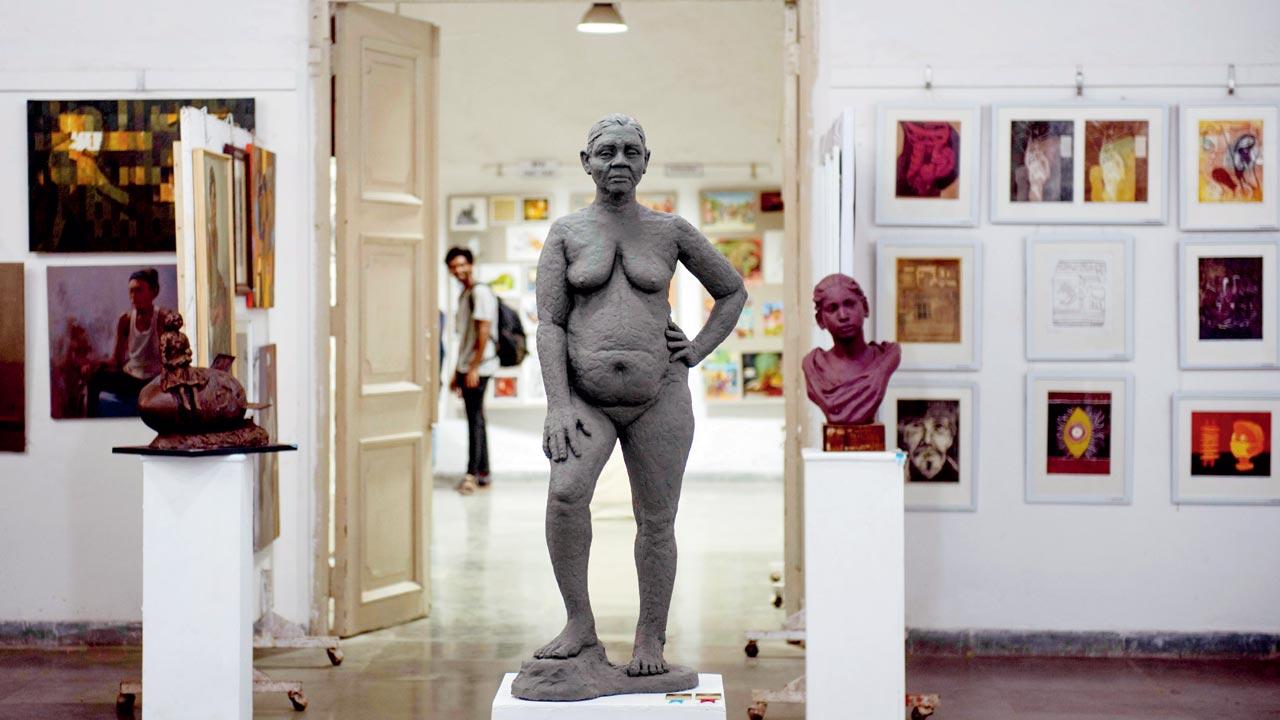 An installation at the annual Art Exhibition at JJ School of Arts organised in June this year. Pic/Getty Images
An installation at the annual Art Exhibition at JJ School of Arts organised in June this year. Pic/Getty Images
The Sir Jamsetjee Jeejeebhoy School of Art, Pinto writes, began with drawing classes at the Elphinstone Institution commencing in March 1857. “Sir Jamsetjee stepped in and offered his own home on Abdul Rahman Street. Three ateliers were established: decorative painting, sculpture and artistic metalwork [wrought iron work]. The ateliers were headed by three English masters: Mr Higgins, John Griffiths and Lockwood Kipling [the father of Rudyard Kipling who would give us that memorable phrase, ‘The White Man’s Burden’ and would call us ‘half devil and half child’].”
Sir Jamsetjee Jeejeebhoy’s son also known as Jamsetjee took forward this “dream” after his father’s demise in 1859. An alumnus, privy to its history, shares that soon after, a campus was given—“a heavily wooded site just outside the city walls”—for the purpose of building a school for “art and industry”.
At the beginning, all the arts were taught in the same school, but by the early 20th century, the schools broke into different departments. Sir JJ College of Architecture was the first department to be created in 1913, followed by Sir JJ Institute of Applied Arts in 1935. “We know that the campus has changed its shape over the course of time—very old maps put the existing Sir JJ Institute of Applied Arts outside the campus walls,” he shares.
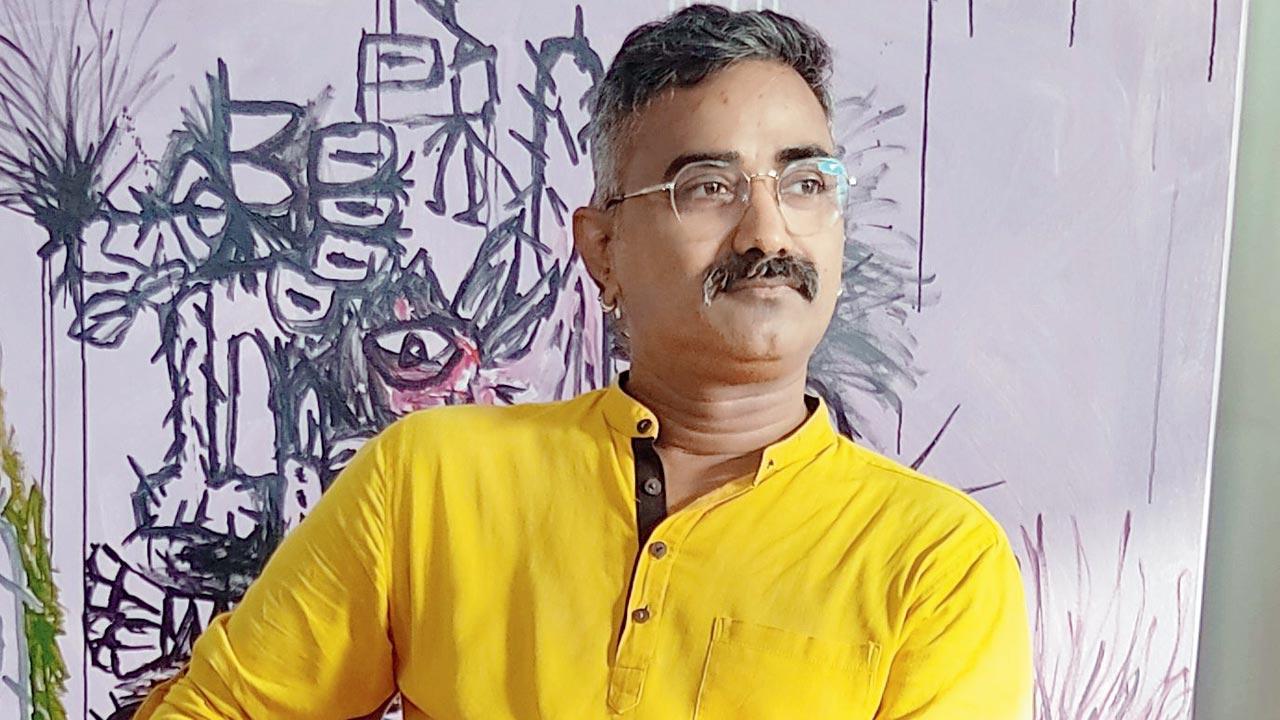 Rajesh Pullarwar, contemporary artist and JJ alumnus
Rajesh Pullarwar, contemporary artist and JJ alumnus
This rich inheritance, unfortunately, say alumni, has eroded with time due to neglect. “We have been suffering from not having autonomy,” a source at JJ shared. “And it’s not just academics [outdated syllabus], but administrative and financial too. Getting anything done, requires multiple approvals and in a government institution, this takes a lot of time. So, while salaries are coming on time, and students’ fees are subsidised, both of which are wonderful things, you have restrictions as to how much you can spend, and for what purpose.” For instance, if you want to make changes to the premises, you need to rely on the public works department (PWD). “Even the process of recruitment of teachers is tedious. MPSC exam has become compulsory to hire permanent staff, and that process can take years. Not having new staff infusing the college with freshness on a regular basis, has definitely been one of the reasons why JJ is slacking.”
The idea for complete autonomy was first mooted in February 2017, with a GR Issued by the Higher and Technical Education, Government of Maharashtra, permitting the three schools to start the process of preparing a proposal for the same. A proposal was presented to the University of Mumbai in August that same year. However, to begin the process with the University Grants Commission, the schools, owned by State Government and controlled by its Ministry, first needed a permanent affiliation with the University of Mumbai. This was only granted in 2019. That same year, Saurabh Vijay, who was then Secretary for Higher and Technical Education, Government of Maharashtra, suggested that the schools apply for De-Novo Deemed to be University status, and an NOC for the same was granted in August that year. “De-Novo is a status given to an institution with a legacy, with a clear mandate that it will start new courses that are contemporary and different from anything out there. The focus has to be on teaching and research in unique and emerging areas of knowledge. It’s a version of autonomy, which fundamentally means that we would have a governing body within the institution made up of some of the best names of the industry, as well as the faculty.
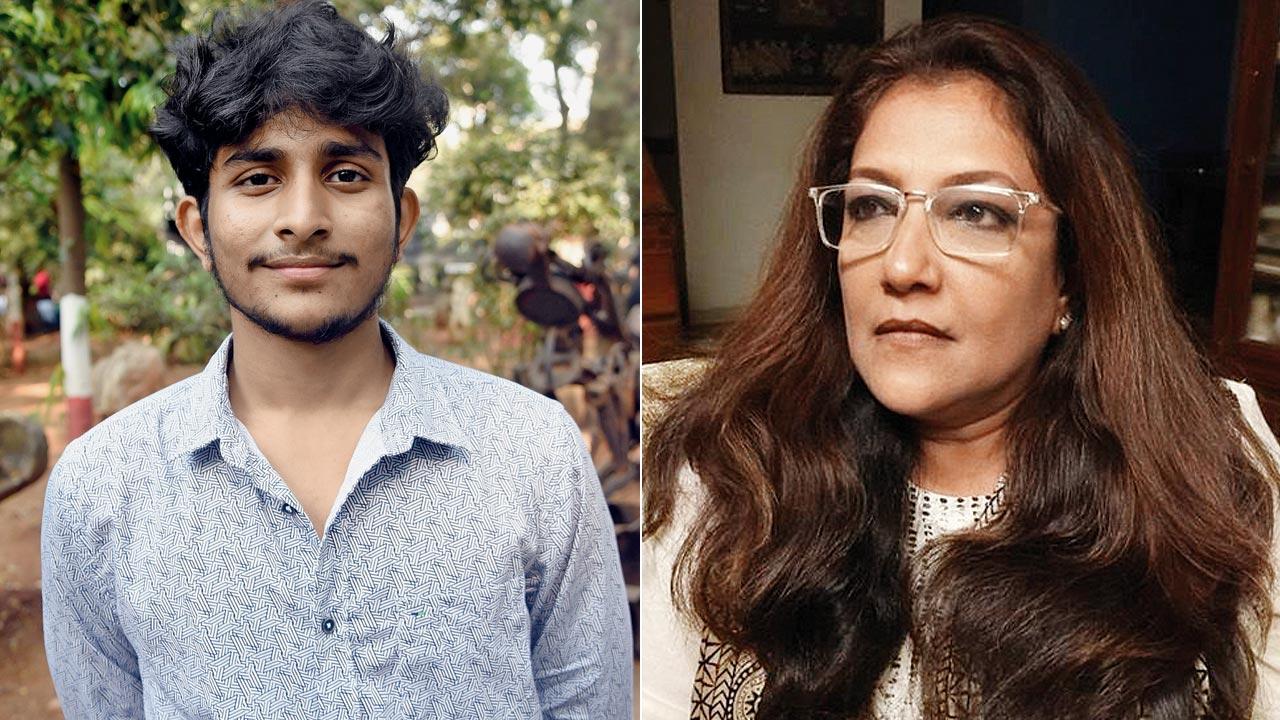 Santosh Sanjay Parkar and Shilpa Joglekar
Santosh Sanjay Parkar and Shilpa Joglekar
Together, they would decide on everything from academics, administration, recruitment and finances... things that we would otherwise keep going back to the government for. The funds would come from the government in the initial years, but eventually, we would plan to put an effective system in place. The alumni could, for instance, become effective partners. At present, many of them want to give money and support us, but we have no means to take it,” says the source, adding, that the De-Novo tag was a great move, to empower the college to become independent. “It would allow us to collaborate with the city at large, because we consider ourselves a metropolitan institution. Remember, all things that happen in the city affect us, and historically, we have affected the city as well.”
On March 17, 2020, just a week before the lockdown, an online application for the De-Novo tag was made to the University Grants Commission, along with an application processing fee of R15 lakh by the Maharashtra government, which was the sponsoring body. Despite COVID-19 putting the brakes on the process, the UGC approved the proposal and it was sent for further approval to the Ministry of Education.
But the state government threw a spanner in the works in March this year, when it set up a committee to explore the possibility of making JJ an affiliating university. “This would have defeated everything we hoped to do to protect the legacy of this institute.” The source highlighted the danger of mediocre institutes exploiting the Sir JJ name for their own benefit. “If JJ became an affiliating university, believe me, the faculty would have no time to teach. They would only be doing clerical, administrative work. This is the time to think about JJ’s growth,” the source said, adding, “The world has gone forward, but JJ in some sense has been left behind.”
The Bombay Progressive Artists’ Group formed in 1947 by FN Souza, SH Raza, MF Husain, KH Ara, HA Gade, and SK Bakre, and which comprised primarily of former JJ alumni, through their new styles, sensibilities, philosophies and practices evoked a new modern language of art. Pinto in his book Citizen Gallery, quotes Souza one of the group’s founding fathers, who said, “I had begun to notice that the JJ School of Art turned out an awful number of bad artists, year after year. And the Bombay Art Society showed awful crap in its Annual Exhibitions which comprised the amateur efforts of some memsahibs in India who were pampered by British imperialism. Hence their pretty-pretty paintings together with the work of several artists coming out of the art school, exhibited once a year in the Art Society had no directions, no goal, no inspiration, no energy... It then occurred to me to form a group to give ourselves an incentive. Ganging up in a collective ego is stronger than single ego. It is easier for a mob to carry out a lynching; and in this case, we found it necessary to lynch the kind of art inculcated by the JJ School of Art and exhibited in the Bombay Art Society.’”
Referring to this, the source says, “This is an unfortunate criticism against JJ... we don’t want to be in this situation, and we no longer want to rely on our glorious past. JJ has to move forward.”
In April this year, soon after the government’s proposal to consider making JJ a state university, the alumni came together to launch an online petition to grant it the De-Novo Deemed to be University status. “We... reject and condemn this unexpected and unfortunate intervention, in a process already nearing completion,” they wrote in their petition, which has been signed by 5,359 signatories.
Contemporary artist Rajesh Pullarwar, who exhibits globally, was among the alumni who extended his support to the cause. Pullarwar got his bachelor’s and master’s degree from the institute in 2000 and 2002 respectively. “If you want to revive the institute, you need to rehaul the system, and that’s what everyone needs to realise.” He feels that many students who graduate from JJ today aren’t equipped to face the challenges in their respective industries, because the syllabus is not upgraded. “Also, if you don’t have permanent teachers, students won’t have good mentors. Teachers on contract come and go,” Pullarwar asserts.
A faculty member, on condition of anonymity, shared that at present, De-Novo is a concern for many protesting students, because “they are worried about the fee hike”, but ex-alumnus Amol Hirawadekar, who has joined the protesting students, is quick to clarify that this not on their agenda right now. “We have doubts over the fee structure of course, but we have no reason to oppose it yet.” Parkar, who is student general secretary, echoes his sentiment. The source, however, told mid-day that JJ wouldn’t hike students’ fees, as assumed, because the government will be supporting the institute for a while. “The transition is going to be seamless, and the rights of the existing students will be protected.”
Professor Vishwanath Sable, dean of Sir JJ School of Art, and the director of the Directorate of Art, Maharashtra government, is confident that JJ will see things through. “The students are experiencing confusion about the De-Novo status. The state has established a task force, which other deans and I are part of, and the process is on to get all approvals. We are going to clarify their doubts, at the right time.” He says that for JJ to get De-Novo, they will need to fulfil all criteria, which includes creating good infrastructure and filling up vacant posts. At present, they have 44 posts, of which seven are permanent. “But we have hired adjunct and clock-hour basis faculty... and have filled 36 posts already. I understand their concerns. We are having a meeting with the Ministry of Higher and Technical Education, and will address their issues.”
On Thursday, Chandrakant Patil, Minister of Higher and Technical Education had a meeting with the protesting students. In a press note shared later by the students, Patil is said to have promised to build a new hostel in three years, and until then, make temporary hostel arrangements for students. Patil appealed to students to withdraw the agitation, assuring to address all their other demands within the next month or so. The De-Novo status wasn’t discussed at this meeting. The students called off their protest soon after.
When contacted, Santosh Kshirsagar, dean, Sir JJ Institute of Applied Art, who is also part of the committee that prepared the proposal for the De-Novo status, refused to comment on the ongoing issue, but is confident about the blueprint they’ve prepared for JJ’s future: “De-Novo is the solution to ensure smooth functioning of the three pillars of any institution which is academics, administration and finance.”
 Subscribe today by clicking the link and stay updated with the latest news!" Click here!
Subscribe today by clicking the link and stay updated with the latest news!" Click here!







